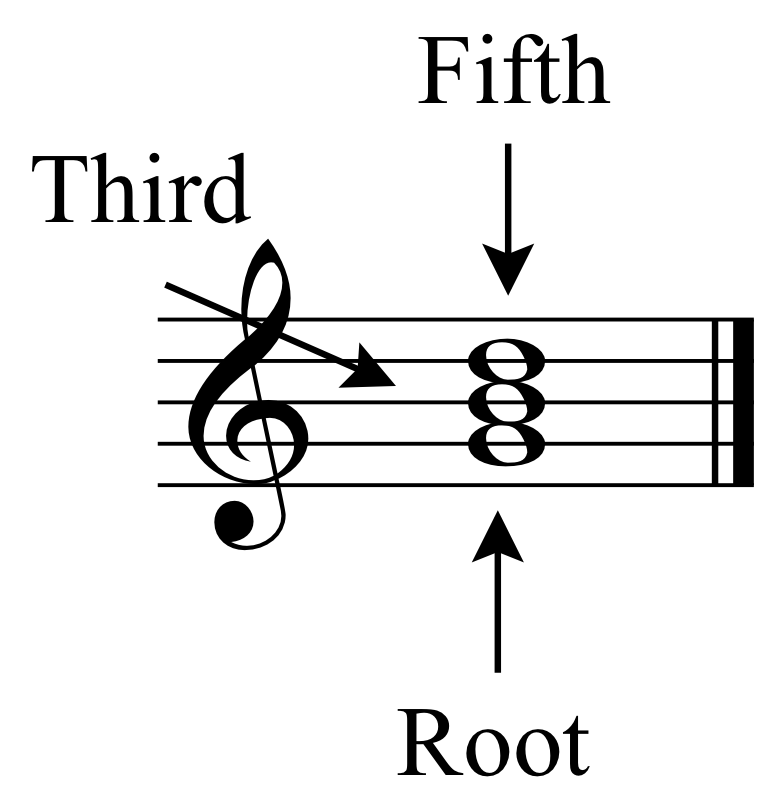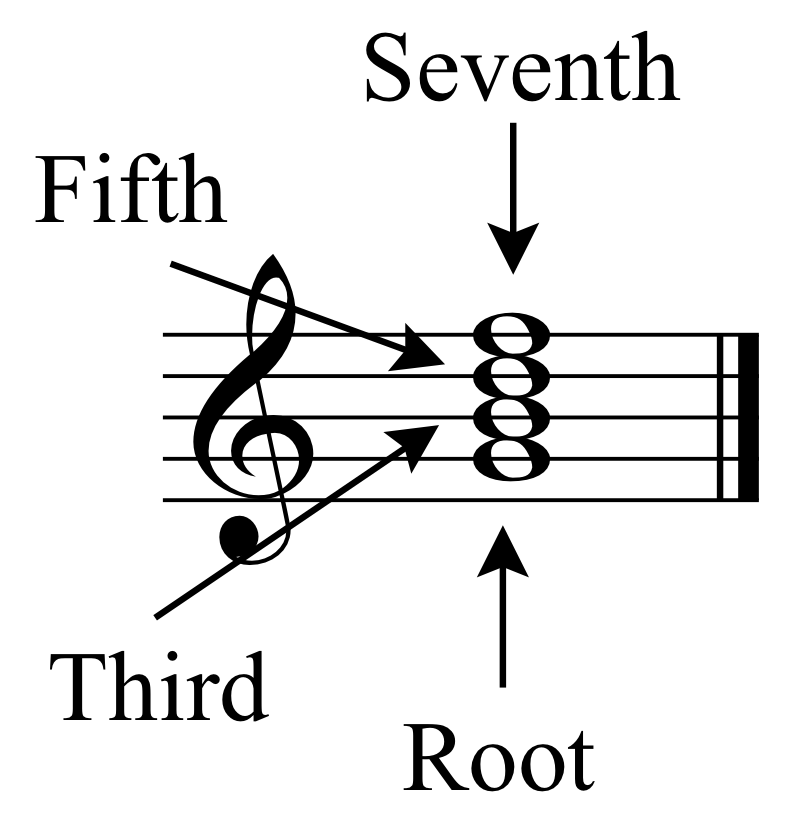Chord – a group of three or more notes, usually played simultaneously
Triad – a chord of three notes stacked in thirds (alternating scale notes)
Seventh chord – a chord of four notes stacked in thirds
Triads
The most important note of triad is its root. This is the note we name the chord after. For example, a C major triads’s root is C. We name the other two pitches based on their distance above the root: third and fifth.

There are four standard qualities of triads.
- Major: M3 + P5
- Minor: m3 + P5
- Diminished: m3 + °5
- Augmented: M3 + +5

Seventh Chords
Seventh chords have roots, thirds, and fifths. They add a fourth pitch called the seventh.

There are five standard seventh chords. Secondary names are in parantheses.
- Major (major-major): Major triad + M7
- Dominant (major-minor): Major triad + m7
- Minor (minor-minor): Minor triad + m7
- Half Diminished (diminished-minor): Diminished triad + m7
- Fully Diminished (diminished-diminished): Diminished triad + °7

Inversions
Like intervals, we can invert chords.
| Bottom Note | Position or Inversion |
| Root | Root Position |
| Third | First Inversion |
| Fifth |
Second Inversion |
| Seventh |
Third Inversion (seventh chords only) |

It’s a Trap!
Although root position chords are common, inversions are common as well, especially we as get into more classical music and part writing. So do not assume that the bottom note is the root as we analyze and write music. When faced with a chord, make sure is a stack of thirds (in good snowman order), so you know which note the root is. If it isn’t a stack of thirds, reorder it so that it is. If you practice, you will get good enough that you can just see the inversion at first glace.
Also, get used to the idea that chords will have multiple versions of some notes, may leave out others, or be spaced over many octaves. If we can reduce these many notes to a stack of thirds, we can call it one of these chords. Here are a few reductions to show my point.

Real music is complex and that’s why it’s fun. And that’s why you are putting yourself through all of this pain in the first place.
Memorizing Chords
Like we did with intervals, you need to memorize chords as soon as possible. As we get into analysis, you need to be able to figure out what chords are where quickly.
So, learn white note triads and seventh chords first, and then expand out so you know diatonic triads in most major and minor keys. Don’t skimp on seventh chords; you should know these as well as you know triads. The more you put into this now, the more you will help yourself throughout your musicial career.
Diatonic Triads in C major and Major Solfege
Major
- C-E-G (Do-Mi-Sol)
- F-A-C (Fa-La-Do)
- G-B-D (Sol-Ti-Re)

Minor
- D-F-A (Re-Fa-La)
- E-G-B (Mi-Sol-Ti)
- A-C-E (La-Do-Mi)

Diminished
- B-D-F (Ti-Re-Fa)

Diatonic Seventh Chords in C major and in Solfege
Major
- C-E-G-B (Do-Mi-Sol-Ti)
- F-A-C-E (Fa-La-Do-Mi)

Dominant
- G-B-D-F (Sol-Ti-Re-Fa)

Minor
- D-F-A-C (Re-Fa-La-Do)
- E-G-B-D (Mi-Sol-Ti-Re)
- A-C-E-G (La-Do-Mi-Sol)

Half Diminished
- B-D-F-A (Ti-Re-Fa-La)
